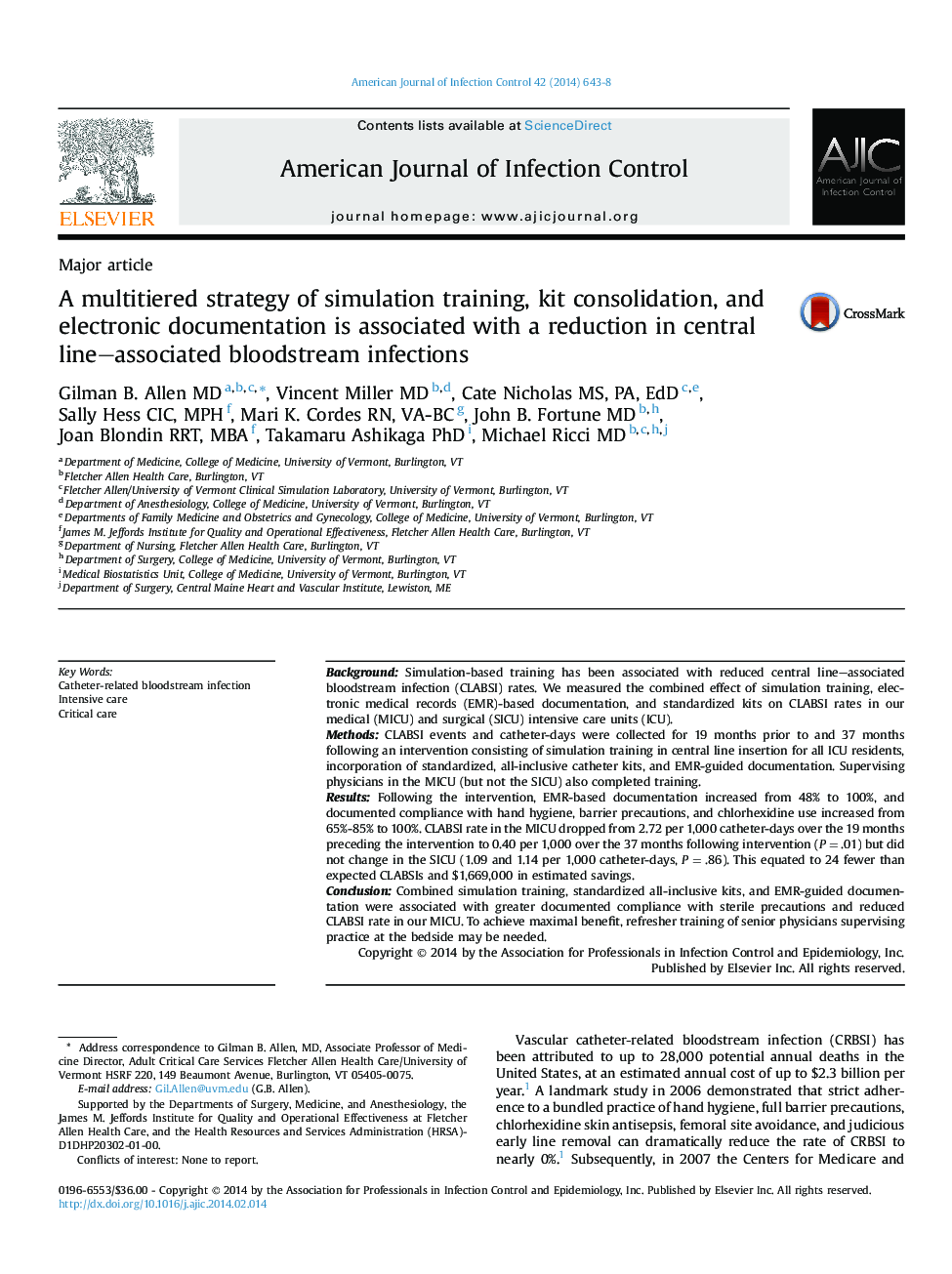| Article ID | Journal | Published Year | Pages | File Type |
|---|---|---|---|---|
| 2638194 | American Journal of Infection Control | 2014 | 6 Pages |
BackgroundSimulation-based training has been associated with reduced central line–associated bloodstream infection (CLABSI) rates. We measured the combined effect of simulation training, electronic medical records (EMR)-based documentation, and standardized kits on CLABSI rates in our medical (MICU) and surgical (SICU) intensive care units (ICU).MethodsCLABSI events and catheter-days were collected for 19 months prior to and 37 months following an intervention consisting of simulation training in central line insertion for all ICU residents, incorporation of standardized, all-inclusive catheter kits, and EMR-guided documentation. Supervising physicians in the MICU (but not the SICU) also completed training.ResultsFollowing the intervention, EMR-based documentation increased from 48% to 100%, and documented compliance with hand hygiene, barrier precautions, and chlorhexidine use increased from 65%-85% to 100%. CLABSI rate in the MICU dropped from 2.72 per 1,000 catheter-days over the 19 months preceding the intervention to 0.40 per 1,000 over the 37 months following intervention (P = .01) but did not change in the SICU (1.09 and 1.14 per 1,000 catheter-days, P = .86). This equated to 24 fewer than expected CLABSIs and $1,669,000 in estimated savings.ConclusionCombined simulation training, standardized all-inclusive kits, and EMR-guided documentation were associated with greater documented compliance with sterile precautions and reduced CLABSI rate in our MICU. To achieve maximal benefit, refresher training of senior physicians supervising practice at the bedside may be needed.
